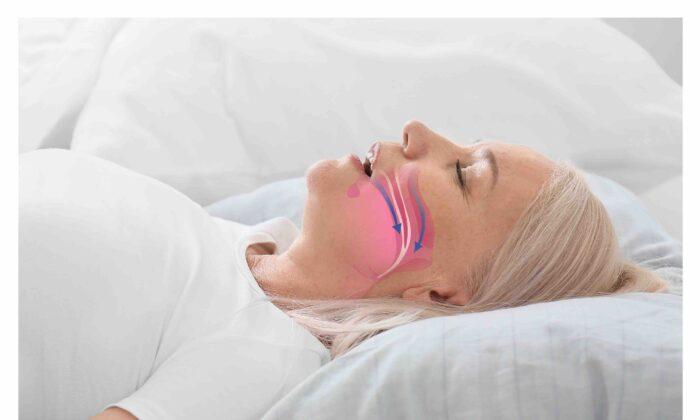Most people who have sleep apnea don’t realize it. That’s because this disorder only occurs during sleep.
Sleep apnea is when you have pauses in breathing while you’re asleep. These pauses can last from seconds to minutes. You may have difficulty breathing a few times or dozens of times an hour.
These breathing pauses can be dangerous if they cause the oxygen level in your body to drop or disturb your sleep. When oxygen drops, your brain does whatever it can to get you to resume breathing. And then you may snore, gasp, snort loudly, or make a choking sound. A family member or bed partner might be the first to notice these disruptions in your sleep.
Sleep apnea is a common disorder. Anyone can develop it. “Sleep apnea can occur in both genders, in all races and ethnicities, and in people of all sizes and shapes,” says Dr. Michael Twery, a sleep expert at NIH.
The most common type of sleep apnea is called obstructive sleep apnea. Any air that squeezes past a blocked airway can cause loud snoring. When you’re awake, the muscles in your throat help keep your airway stiff and open. In adults, the throat muscles and tongue can relax during sleep, or fat tissue in the neck can narrow your airway to cause an obstruction. In children, the airway may become blocked if their tonsils are so large they obstruct the airway opening.
The other type of sleep apnea is central sleep apnea. In central sleep apnea, the brain doesn’t send the correct signals to your breathing muscles, so you stop breathing for brief periods.
So how can you tell whether you may have this disorder? One of the most common symptoms is excessive daytime sleepiness. “Anyone who feels so tired on a regular basis that this is a drag on their daytime function—that even if they allow enough time to get enough sleep on a regular basis and they still feel this way—then they need to discuss it with their doctor,” Twery says.
Another common symptom is loud, frequent snoring. But not everyone who snores has sleep apnea. Other symptoms of sleep apnea may include feeling irritable or depressed, or having mood swings. You may have memory problems or trouble concentrating. Or, you may wake up with a headache or a dry mouth.
Your doctor can diagnose sleep apnea based on your symptoms, a physical exam, and a sleep study. For a sleep study, your doctor may send you to a sleep lab or provide a portable sleep monitor. Sleep studies record things like heart rate and oxygen level while you sleep.
A sleep study can show whether apnea is mild or severe. “The largest proportion of the population with sleep apnea has mild sleep apnea,” Twery explains. “Mild may or may not be associated with any daytime symptoms.” People who are so sleepy that they’re at risk of a drowsy driving accident are probably in the moderate to severe range.
Doctors may prescribe breathing devices that pump air or mouthpieces that adjust the lower jaw or hold the tongue. Other treatments are available and may be considered with advice from a physician familiar with your health.





